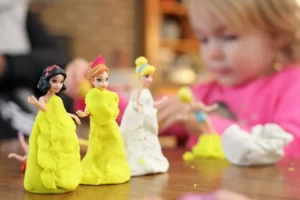
10 Best Classroom Rules for Elementary School: Form Better Behavior
Following these classroom rules for elementary school can help your elementary students form better behavior.
Classroom rules are important to your class. When teachers have rules, classroom management skills, and a conviction that every child can succeed, elementary classrooms can improve as learning environments. Rules aid in establishing a stable environment that reduces disruptions in the classroom and motivates kids to exercise restraint.
Children must be taught that making moral decisions is their responsibility and that they will be held accountable for their actions. Here are a few of the most effective classroom guidelines for elementary school.
Top Classroom Rules
Teachers may opt to set rules or ask their pupils to help them create them. Students are more likely to abide by rules, according to teachers who involve their kids in the process. Asking students to discuss their motivations for attending school and their learning objectives in small groups or as a class is one way to get them involved in the creation of rules.
After that, have them list the laws that will enable them to accomplish their objectives. their thoughts on the board in writing. If a child states a rule negatively, such as, “Don’t come to school late,” ask how it could be stated in a positive way. Below are some examples.

- Arrive promptly at school.
- You should bring whatever you need.
- Pay attention to what the instructor has to say.
- Follow directions.
- Be kind to others.
- Use manners.
- Work hard.
- Do your best.
- Keep your hands and feet to yourself.
- Observe the playground rules.
Then assist them in consolidating their list into three to five basic rules, such as:
- be prepared;
- be respectful;
- be productive; and
- be safe.
You might want to ask the students to sign a copy of the rules after they are decided upon and then post them. Review and define each as necessary. If rules are established, understood, and followed in the classroom, students are more likely to abide by them. We have shared classroom rules for high school, kindergarten, and preschool.
Tips to Consider

Make an effort to address all potential behavioral issues when selecting from the top 10 classroom rules. Talking out of turn, bothering classmates, straying from the topic at hand, and failing to follow instructions are just a few examples of common classroom management problems. Ask yourself, “do our rules cover these problems and others that students might struggle with this year?” If not, you might want to reconsider them.
Additionally, make the rules as precise and lucid as you can. Then, discuss them with your students in order to set classroom expectations. They ought to be fully aware of the nature and application of the rules as well as the repercussions of breaking them.
Work with students to outline classroom rules and expectations on the first day of class. Additionally, telling their parents what you expect of them is a good idea. Consider giving parents a copy of the rules to review, sign off on, and return to you with the students.
Conclusion: Classroom Rules Elementary
Before they worsen, teachers must recognize problem behaviors and intervene. Children are more likely to develop self-discipline and learn when teachers enforce a classroom management plan, establish clear ground rules, and foster positive relationships with their students.
When students have rules, they know what your expectations are for them. They are aware of what you expect them to do as well as the repercussions of breaking the rules.


